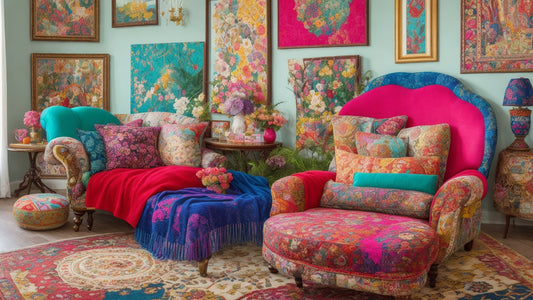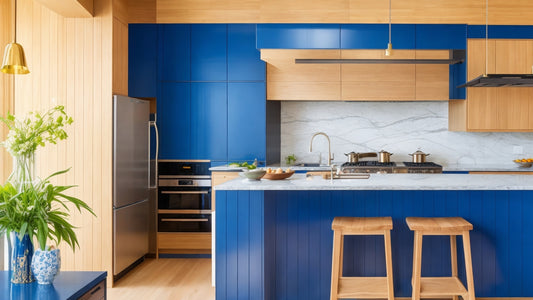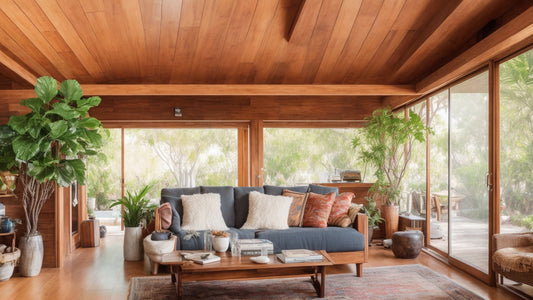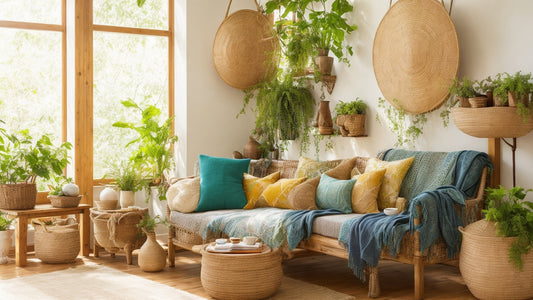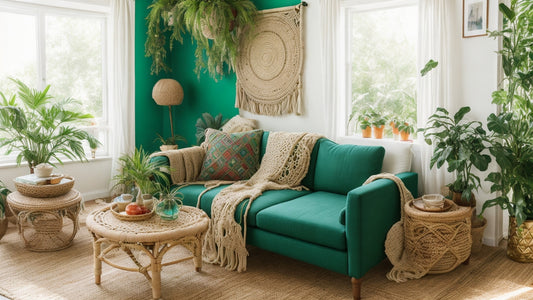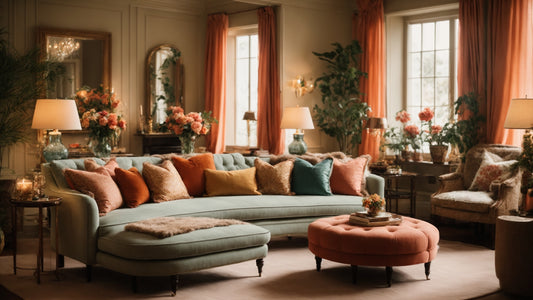The Ultimate Guide to Decorating Your Living Room
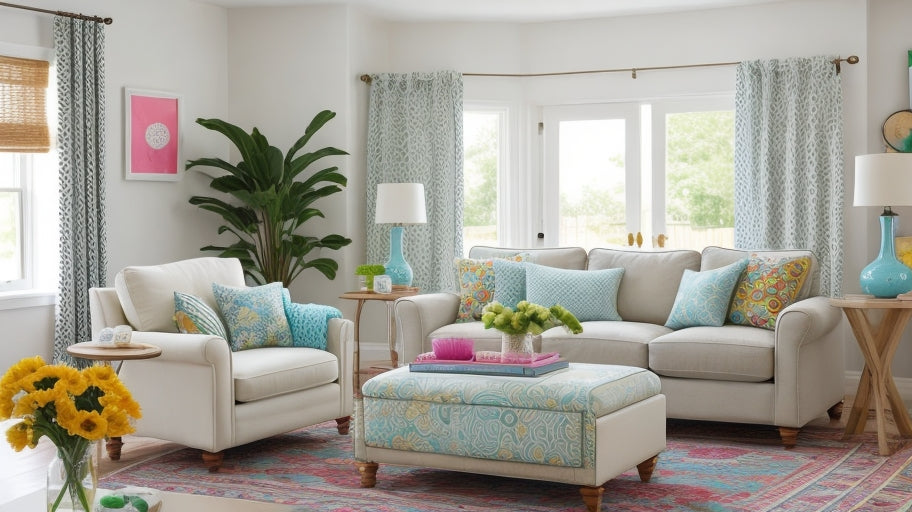
Share
How to decorate a living room
The living room is often the heart of the home, where family and friends gather to relax, socialize, and entertain. It's important to create a living room that is both stylish and comfortable, so that everyone feels welcome and at ease.
If you're feeling overwhelmed about decorating your living room, don't worry. We've got you covered. In this blog post, we'll walk you through the essential steps of living room decoration, from choosing a color scheme to adding the finishing touches.

1. Choose a color scheme
The first step in decorating your living room is to choose a color scheme. This will help you to create a cohesive look and feel for the space. When choosing colors, consider the size of your living room, the amount of natural light it receives, and your personal style.
If you have a small living room, you may want to choose lighter colors to make the space feel more open and airy. If your living room has a lot of natural light, you can afford to go with darker colors or bolder patterns. And of course, your personal style will play a big role in your color choices.
Here are a few tips for choosing a color scheme for your living room:
- Start with a neutral base. Neutral colors, such as white, beige, and gray, are a great way to create a blank canvas for your living room décor. You can then add pops of color with furniture, accessories, and artwork.
- Choose a color palette. A color palette is a group of colors that work well together. When choosing a color palette, consider the mood you want to create in your living room. For example, if you want a relaxing space, you might choose a palette of soft blues and greens. If you want an energetic space, you might choose a palette of bright reds and yellows.
- Use the color wheel. The color wheel is a great tool for understanding how colors relate to each other. Complementary colors are opposite each other on the color wheel and create a high-contrast look. Analogous colors are next to each other on the color wheel and create a harmonious look.
Read More: A Guide to Color Psychology & Home Decor
2. Select furniture

Once you have a color scheme in mind, it's time to start selecting furniture. The most important pieces of furniture in a living room are a sofa, a coffee table, and an end table or two. You may also want to add an armchair or two, a television stand, and a bookshelf.
When choosing furniture, consider the size and layout of your living room. You want to make sure that the furniture fits comfortably in the space and that there is enough room to move around. It's also important to choose furniture that is comfortable and stylish.
Read More: 9 Steps to Furnishing Your Space
Here are a few tips for choosing furniture for your living room:
- Measure your space. Before you start shopping for furniture, measure the dimensions of your living room. This will help you to choose furniture that fits comfortably in the space.
- Consider the layout of your living room. Think about how you want to use your living room and what activities will take place there. This will help you to determine the best layout for your furniture.
- Choose furniture that is comfortable and stylish. When choosing furniture, try to find pieces that are both comfortable and stylish. You want to create a space that is both inviting and visually appealing.
3. Add rugs and textiles
Rugs and textiles are a great way to add color, pattern, and texture to your living room. When choosing rugs and textiles, consider the overall style of your living room. For example, if you have a traditional living room, you might choose a Persian rug and velvet throw pillows. If you have a modern living room, you might choose a graphic rug and linen throw pillows.
Here are a few tips for adding rugs and textiles to your living room:
- Choose a rug that is the right size for your space. The rug should be large enough to fill the conversation area of your living room, but it should not be so large that it overwhelms the space.
- Layer rugs to add interest and texture. You can layer a small rug over a larger rug to create a visual focal point.
- Use textiles to add color and pattern. Throw pillows, blankets, and curtains are a great way to add color and pattern to your living room.
Read More: Coolest Area Rug Trends for 2023
4. Add artwork and accessories
Artwork and accessories are the finishing touches that will make your living room feel truly personal and inviting. When choosing artwork and accessories, consider the overall style of your living room and your personal taste.
Here are a few tips for adding artwork and accessories to your living room:
- Hang artwork at eye level. This will help to create a balanced and visually appealing look.
- Group artwork together to create a focal point. You can group together artwork of the same size, color, or subject matter to create a visual focal point in your living room.
- Use accessories to add personality and interest. Accessories are a great way to add your own personal style to your living room. Choose accessories that you love and that reflect your personality.
Here are a few specific ideas for artwork and accessories that you can add to your living room:
- Artwork: Mirrors, paintings, photographs, prints, tapestries, and sculptures are all great choices for artwork in your living room.
- Accessories: Throw pillows, blankets, curtains, coffee table books, vases, plants, and flowers are all great accessories for your living room.
Read More: The Art of Accessorizing: Sophisticated Home Designs
5. Lighting
Lighting is an important element of any living room design. The right lighting can create a warm and inviting atmosphere, or it can create a bright and airy space. When choosing lighting for your living room, consider the overall style of the room and the activities that will take place there.
Here are a few tips for choosing lighting for your living room:
- Layer your lighting. Layering your lighting will help to create a warm and inviting atmosphere. You can layer your lighting by using overhead lighting, table lamps, and floor lamps.
- Choose the right type of lighting for each task. For example, you'll want to use task lighting for reading and writing, and ambient lighting for relaxing and socializing.
- Use dimmers to create different moods. Dimmers are a great way to create different moods in your living room. For example, you can dim the lights to create a relaxing atmosphere for watching a movie, or you can brighten the lights to create a more energetic atmosphere for entertaining guests.
6. Add plants and flowers
Plants and flowers are a great way to add life and color to your living room. When choosing plants and flowers for your living room, consider the amount of natural light that the room receives. You'll also want to choose plants that are easy to care for.
Read More: The Ultimate Guide to Arranging Plants in Your Living Room
Here are a few tips for adding plants and flowers to your living room:
- Choose plants that tolerate low light if your living room doesn't get a lot of natural light. Some good options include snake plants, pothos, and ZZ plants.
- Choose plants that are easy to care for. Some good options include succulents, cacti, and air plants.
- Group plants together to create a focal point. You can group together plants of different sizes and varieties to create a visual focal point in your living room.
- Add flowers to your living room for a pop of color. Fresh flowers are always a beautiful addition to any living room. You can also add dried flowers or artificial flowers to your living room décor.
Conclusion
Decorating a living room can be a fun and rewarding experience. By following the tips in this blog post, you can create a living room that is both stylish and comfortable.
Also Read: The Ultimate Guide to Decorating a Stunning Sitting Room
Here are a few additional tips for decorating your living room:
- Don't be afraid to mix and match styles. One of the best ways to create a unique and personal living room is to mix and match different styles. For example, you might pair a traditional sofa with a modern coffee table or a vintage rug with a contemporary armchair.
- Use accessories to add personality. Accessories are a great way to add your own personal style to your living room. Choose accessories that you love and that reflect your personality.
- Don't forget the details. The details can make a big difference in the overall look and feel of your living room. For example, you might add candles, throw pillows, or a vase of fresh flowers to your coffee table.




